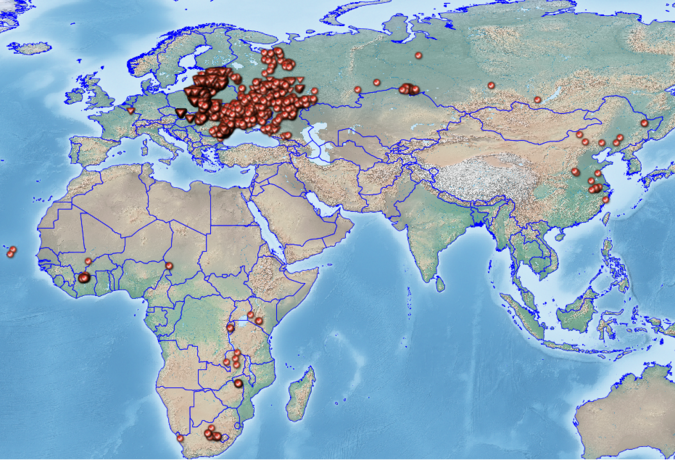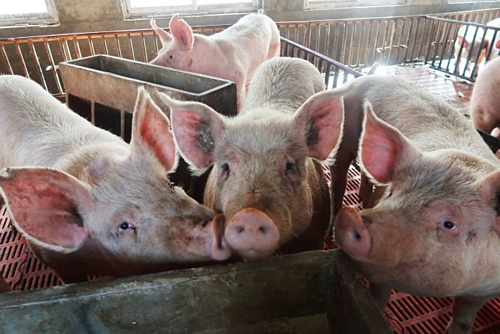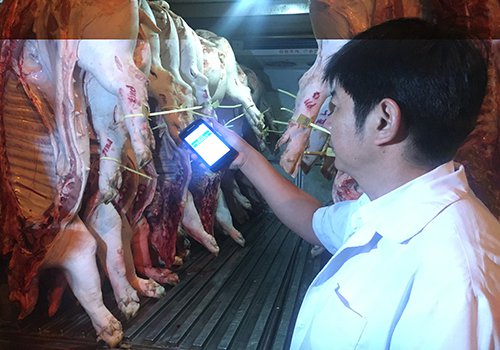The article was consulted professionally by Specialist I Tran Quoc Vinh – Emergency Doctor – Resuscitation – Emergency Department – Share99 Nha Trang International Health Hub.
African swine fever has appeared in 20 countries around the world. This is considered a dangerous epidemic, the nature of rapid spread, greatly affecting the livestock industry, there is currently no vaccine to prevent and cannot be treated.
1. African swine fever outbreak in many places
The virus that causes African swine fever is the virus that causes dengue. Once infected with this virus, the mortality rate is 100%. A vaccine against African swine fever has not yet been found. However, it is very fortunate that this virus does not infect humans. However, the epidemic caused very heavy damage to the livestock industry is without measures to control.
According to statistics of the World Veterinary Organization (OIE), from 2017 to February 18, 2019, there were 20 countries in the world reporting the appearance of African swine fever, of which the hardest-hit place is China, which is also the world's largest producer and consumer of pork.
Pork is currently the main source of meat, which is consumed a lot in Asian countries. Therefore, it is almost certainly possible that the virus that causes swine cholera will enter other countries in the region and spread quickly.
In Vietnam, on February 19, 2019, the Department of Animal Health (Ministry of Agriculture and Rural Development) announced the discovery of the first African swine fever outbreak in Hung Yen and Thai Binh provinces. On March 5, 2019, information from the authorities said that 202 households in 7 provinces and cities had an epidemic, of which 4,200 infected pigs were destroyed.
As of March 29, 2019, African swine fever has spread to 23 provinces in Vietnam, including: Hai Phong, Thanh Hoa, Hanoi, Ha Nam, Hai Duong, Thai Binh, Hung Yen, Hoa Binh, Dien Bien, Thai Nguyen, Ninh Binh, Nam Dinh, Quang Ninh, Bac Kan, Son La, Nghe An, Lang Son, Bac Ninh, Thua Thien – Hue, Lai Chau, Bac Giang, Vinh Phuc
2. Where does African swine fever come from?

1921: African swine fever first appeared in Kenya (Africa).
1957: African swine fever was first detected and reported in Europe.
2007: Outbreak discovered in Armenia.
2008: Azerbaijan began to have infected pigs.
From the end of 2017 to 2018, 12 countries reported having pigs infected with African cholera, including: China, The Russian Federation, Czechoslovakia, Hungary, Latvia, Moldova, Finland, Romania, South Africa, Ukraine and Zambia.
August 2018: African swine fever first appeared in China. Millions of infected pigs have been destroyed in the country.
In Vietnam, Hung Yen province was the first place to detect the outbreak.
Up to now, the report of the Ministry of Agriculture said that African swine fever has been present in 2,296 communes, 204 districts of 29 provinces, with the total number of infected and destroyed pigs up to more than 1.2 million, accounting for more than 4% of the total pig herd of the country.
3. How dangerous is African swine fever?
Unlike swine flu, African swine fever has no direct effect on human health. Swine cholera cannot currently cause human disease but is likely to be transmitted to flies, mosquitoes, mice, cats, and poultry such as chickens and ducks. Pigs with cholera can suffer from other dangerous diseases, such as blue ears, influenza, typist fever … These diseases are dangerous for humans, because of their ability to disrupt the digestive system, especially when eating soup, eating infected but undercooked pork.
When pigs have blue ear disease, pathogenic sysys reside in the mouth. People who are scratched or have wounds, when in contact with infected pigs will be penetrated by bacteria. When infected, patients often show signs of high fever, headache, nausea, hemorrhages in some locations of the body. In some more serious cases, symptoms of digestive intoxication may appear, aggravated by meningitis.
Until now, African swine fever has neither preventive vaccines nor specific treatment drugs. Therefore, some measures can be taken to help prevent African swine fever such as:
- At breeding facilities and wholesale points: regularly clean, disinfect means of transport, breeding tools and slaughter pigs with lime or chemicals.
- For livestock participants: clean personal hygiene before and after contact with pigs.
- Immediately isolate pigs suspected of being sick or sick pigs.
- Avoid spreading pathogens to the outside by killing disease-transmitter intermediate organisms such as mosquitoes, flies,… because they are likely to be carriers from place to place.
- Do not trade pigs and pork without identifying the origin. Consumers should look for pork of clear origin at a reputable address.
- Ensure healthy food, eat cooked and boiled.

For direct advice, please click hotline number or register online HERE. In addition, you can register for remote consultation HERE
Summary article from source: Wikipedia
- Characteristics of African swine fever and the effects of the disease on human health
- African swine fever returns – pay attention to food safety and hygiene
- How can swine cholera spread to humans?

